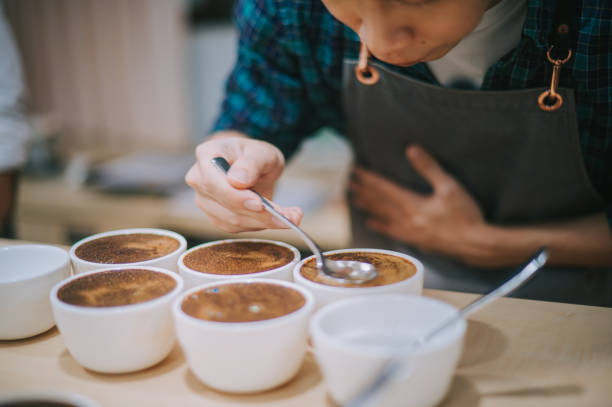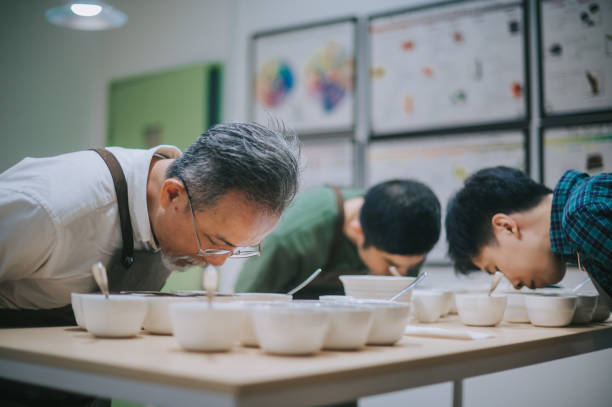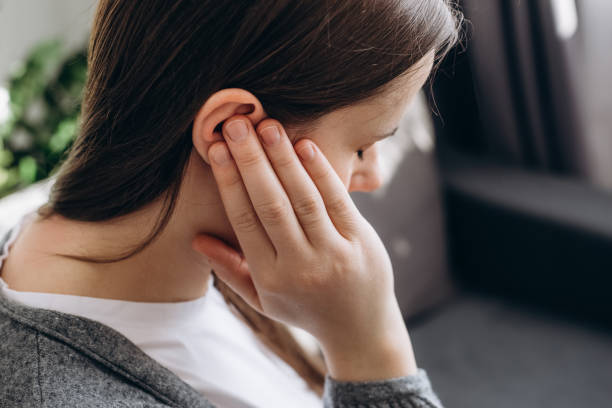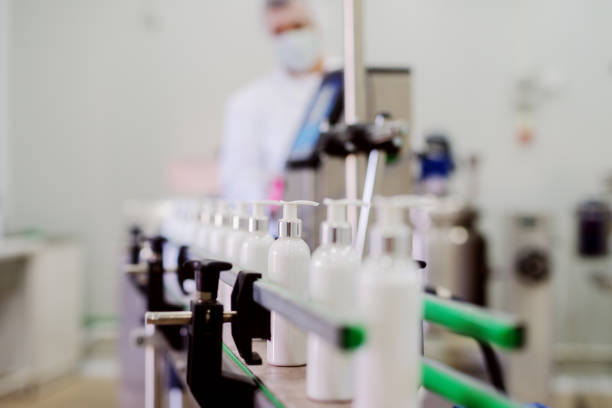The Advanced Guide to Sensory Analysis
Introduction : Explore the World of Sensory Analysis
Sensory analysis is a captivating journey through the realm of human perception. It is the art and science of using our senses to assess and understand the world around us.
In this comprehensive guide, 'The Advanced Guide to Sensory Analysis,' we will embark on this sensory exploration, delving deep into the complexities of sight, hearing, taste, smell, and touch.
In a world bombarded with information, understanding sensory analysis is a valuable skill. Whether you're a food connoisseur, a fragrance enthusiast, a product developer, or simply someone eager to sharpen your senses, this book will be your trusted companion.
Throughout the pages of this guide, we will unveil the mysteries of sensory perception. From the biological mechanisms of taste and smell to the psychology of visual evaluation, no detail will be spared. You will learn how to conduct sensory tests, interpret results, and apply this knowledge across various industries.


Chapter 1: The Science behind Sensory Perception
Sensory analysis begins with understanding the incredible machinery of our senses. In this chapter, we will explore the complex biology of how our senses work. From olfactory receptors in our noses to photoreceptor cells in our retinas, we will dive deep into the science behind sensory perception. Our brains process an impressive amount of sensory information every second, shaping our perceptions of the world. We will examine how these signals are transmitted, interpreted, and ultimately influence our decision-making processes.
By the end of this chapter, you will have a solid foundation in the science of sensory perception, paving the way for a more in-depth exploration of sensory analysis.
Chapter 2: Developing Your Sensory Evaluation Skills
In this chapter, we will delve into developing your sensory evaluation skills. Just as a musician hones their ear to discern subtle nuances in music, you will learn to sharpen your senses to detect the slightest variations in what you perceive.
We will explore practical exercises to improve your palate, train your nose, and refine your sense of touch. Whether you're an aspiring sommelier, a chef striving for perfection, or simply an enthusiast eager to discover new flavors, this chapter will guide you towards a deeper appreciation of the sensory elements around you.
Sensory evaluation is a journey of self-discovery. The more you develop your skills, the more you will appreciate the world around you in an entirely new way.

Chapter 3: The Art of Sensory Tests
In this chapter, we will enter the fascinating world of sensory tests. Whether you work in the food, beverage, or fragrance industry, or if you simply want to host tastings at home, this chapter will provide you with a comprehensive guide to planning, conducting, and analyzing sensory tests.
We will cover different types of tests, from discriminative tests to affective tests, and descriptive tests. You will learn how to design test protocols, recruit panelists, select appropriate samples, and analyze data objectively.
The art of sensory tests will allow you to discover details you might never have noticed otherwise. Get ready to refine your palate and become a master in the art of tasting.
Chapter 4: Understanding Sensory Evaluation Methods
To become an expert in sensory analysis, it is essential to understand sensory evaluation methods. In this chapter, we will explore in detail different approaches and techniques used to evaluate the sensory characteristics of products.
You will discover scoring methods such as the hedonic scale and the visual analog scale, which quantify sensory responses. We will also discuss triangle tests, blind tests, and other methods to detect significant differences between products.
Understanding sensory evaluation methods is key to obtaining accurate and reliable results in your sensory analyses. This chapter will guide you through different approaches, giving you the necessary tools to conduct quality sensory evaluations.

Chapter 5: Taste and Smell: Cornerstones of Sensory Analysis
Taste and smell are two of the most fundamental senses in sensory analysis. In this chapter, we will delve deep into these two essential aspects of our sensory perception.
You will learn to distinguish the five basic tastes, describe aromas accurately, and understand how our taste buds and olfactory receptors work together to create our unique sensory experiences.
Additionally, we will explore the concepts of retro-olfaction and retronasality, which play a crucial role in the tasting of food and drinks. With a better understanding of these mechanisms, you will be able to appreciate and analyze flavors more profoundly.
Chapter 6: Visual Evaluation - Seeing Is Believing
Sight is a powerful sense in sensory analysis. In this chapter, we will explore how our eyes can deceive us and guide us in sensory evaluation.
We will delve into the visual aspects of sensory analysis, whether examining color, shape, texture, or clarity. You will discover how the visual presentation of a product can influence your sensory perception and how sensory evaluation experts use specific techniques to eliminate visual biases.
Whether you're a oenologist examining the color of wine, a chef assessing the presentation of a dish, or a fragrance professional analyzing the hue of a perfume, this chapter will provide you with the skills to become an expert in visual evaluation.

Chapter 7: Texture and Mouthfeel: Sensory Pleasure
Sensory analysis goes beyond basic senses. In this chapter, we will explore how texture and mouthfeel add a crucial sensory dimension to our taste experiences.
You will discover how foods and beverages interact with your mouth, creating unique sensations such as creaminess, crunchiness, smoothness, or spiciness. We will also address how temperature and viscosity affect the perception of texture.
Whether you're a chocolate enthusiast, a cheese lover, or a molecular gastronomy aficionado, this chapter will help you appreciate and describe the pleasures of texture with increased precision.
Chapter 8: Sound and Sensory Perception
In this captivating chapter, we will explore the relationship between sound and sensory perception. Often underestimated, sound can greatly influence our sensory experience.
We will delve into the world of noises, melodies, and rhythms, and see how they can alter our perception of tastes, smells, and even textures. From tasting wine accompanied by the right music to the effect of cooking sounds on our taste perception, this chapter will reveal the secrets of the interaction between sound and other senses.
You will learn to harness this synergy to enrich your tastings and elevate your sensory evaluation skills to a whole new level.

Chapter 9: Putting It All into Practice: Sensory Evaluation in Action
After exploring the basics of sensory analysis, it's time to put your knowledge into practice. In this chapter, we will guide you through the complete process of sensory evaluation, from planning to conclusion.
You will discover how to design test protocols specific to your needs, recruit qualified panelists, and organize effective evaluation sessions. We will also address data collection and analysis, as well as interpreting results for informed decision-making.
Whether you want to evaluate a new dish, a quality wine, or an exquisite perfume, this chapter will accompany you through the sensory evaluation process.
Chapter 10: Sensory Analysis in the Food Industry
The food industry heavily relies on sensory analysis to create products that appeal to consumers. In this chapter, we will delve into the application of sensory analysis in this field.
We will explore how chefs, food experts, and researchers use sensory analysis to develop new dishes, improve existing recipes, and ensure the quality of food products. You will also discover how consumers play a crucial role in evaluating food products through tasting panels.
This chapter will give you an in-depth insight into the impact of sensory analysis on the food industry and how it contributes to satisfying our taste buds.

Chapter 11: Sensory Analysis in the Beverage Industry
Beverages, whether alcoholic or non-alcoholic, offer a unique sensory experience. In this chapter, we will explore how sensory analysis is used in the beverage industry to create drinks that delight the senses.
You will discover how sommeliers assess wines, distillers refine spirits, and brewers create beers with varied aromas and flavors. We will also address the tasting of non-alcoholic beverages such as coffee, tea, and fruit juices.
Whether you're a wine enthusiast, a craft beer expert, or a coffee aficionado,
Chapter 12: Sensory Analysis in Perfumery and Cosmetics
Perfumery and the cosmetics industry are fields where sensory analysis plays a crucial role. In this chapter, we will explore how perfumers and cosmetics experts use the senses to create products that evoke emotions.
We will delve into the world of fragrances, textures, and colors, highlighting the importance of the initial sensory impression in these industries. You will discover how experts assess the longevity of perfumes, the smoothness of lotions, and the brilliance of cosmetic products.
Whether you're a perfume enthusiast, a skincare aficionado, or a professional in the cosmetic industry, this chapter will unveil the secrets of sensory analysis in this enchanting world.

Chapter 13: Sensory Analysis in Product Development
Product development relies on satisfying the needs and desires of consumers. In this chapter, we will explore how sensory analysis is a fundamental pillar in the process of creating innovative and appealing products.
You will discover how product designers use sensory feedback to improve the features of their creations, whether it's the development of electronic gadgets, comfortable clothing, or practical household items. We will also address sensory tests to evaluate consumer satisfaction.
This chapter will show you how sensory analysis contributes to the creation of products that not only function well but also awaken the senses and spark enthusiasm.
Chapter 14: Sensory Analysis: Beyond the Senses
In this final chapter, we will explore the broader horizons of sensory analysis. We will dive into areas where human senses transcend their natural limits to explore extraordinary sensory experiences.
We will discuss topics such as virtual reality and augmented reality, which offer incredible possibilities to extend our senses and create immersive sensory environments. Additionally, we will explore the realms of synesthesia, where senses blend in surprising ways, such as seeing sounds or hearing colors.
This chapter will show you how sensory analysis is constantly evolving to push the boundaries of human perception, paving the way for new sensory experiences and forms of artistic expression.

Conclusion : Your Journey into Sensory Analysis
Congratulations! You have embarked on a captivating sensory journey through the pages of this guide. You have explored the senses, uncovered the secrets of sensory analysis, and perhaps expanded your own understanding of perception.
Sensory analysis is an endless journey, where each new sensory experience is an opportunity to learn and grow. Whether you aspire to become an expert in sensory evaluation, enhance your appreciation of sensory pleasures, or simply satisfy your curiosity, this guide has provided you with the knowledge to move forward.
We hope this guide accompanies you in all your future sensory adventures. Keep exploring, awakening your senses, and appreciating the world around you in a new and fascinating way.
